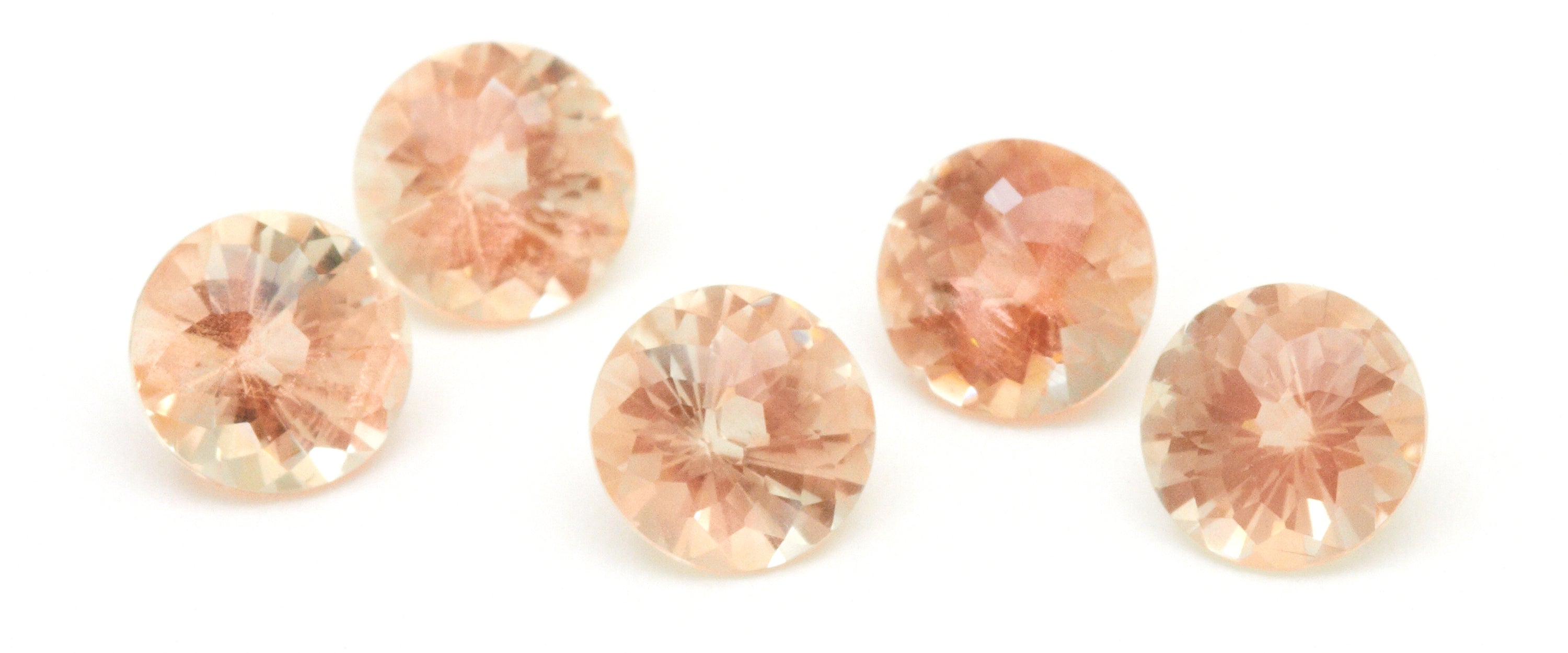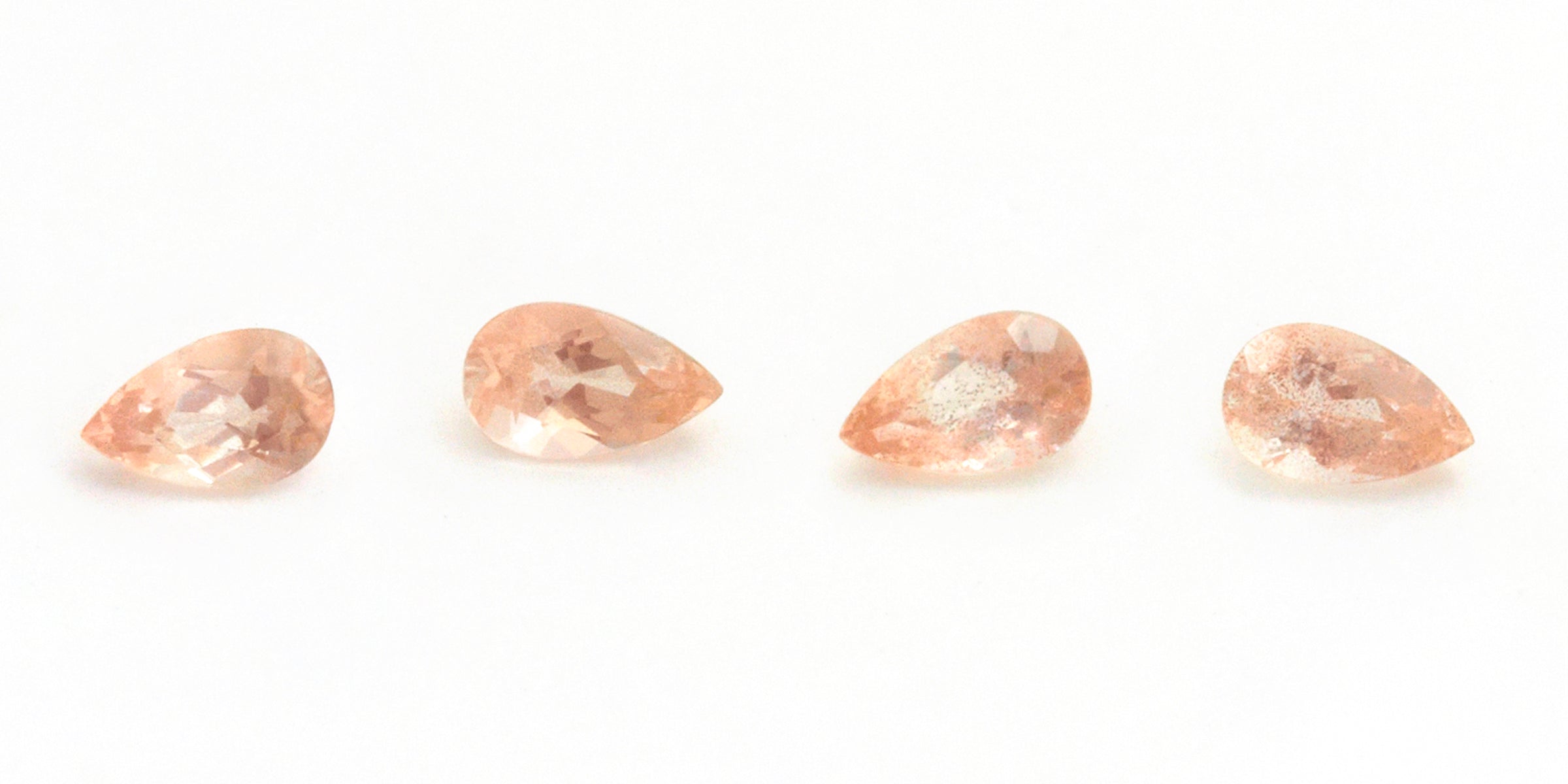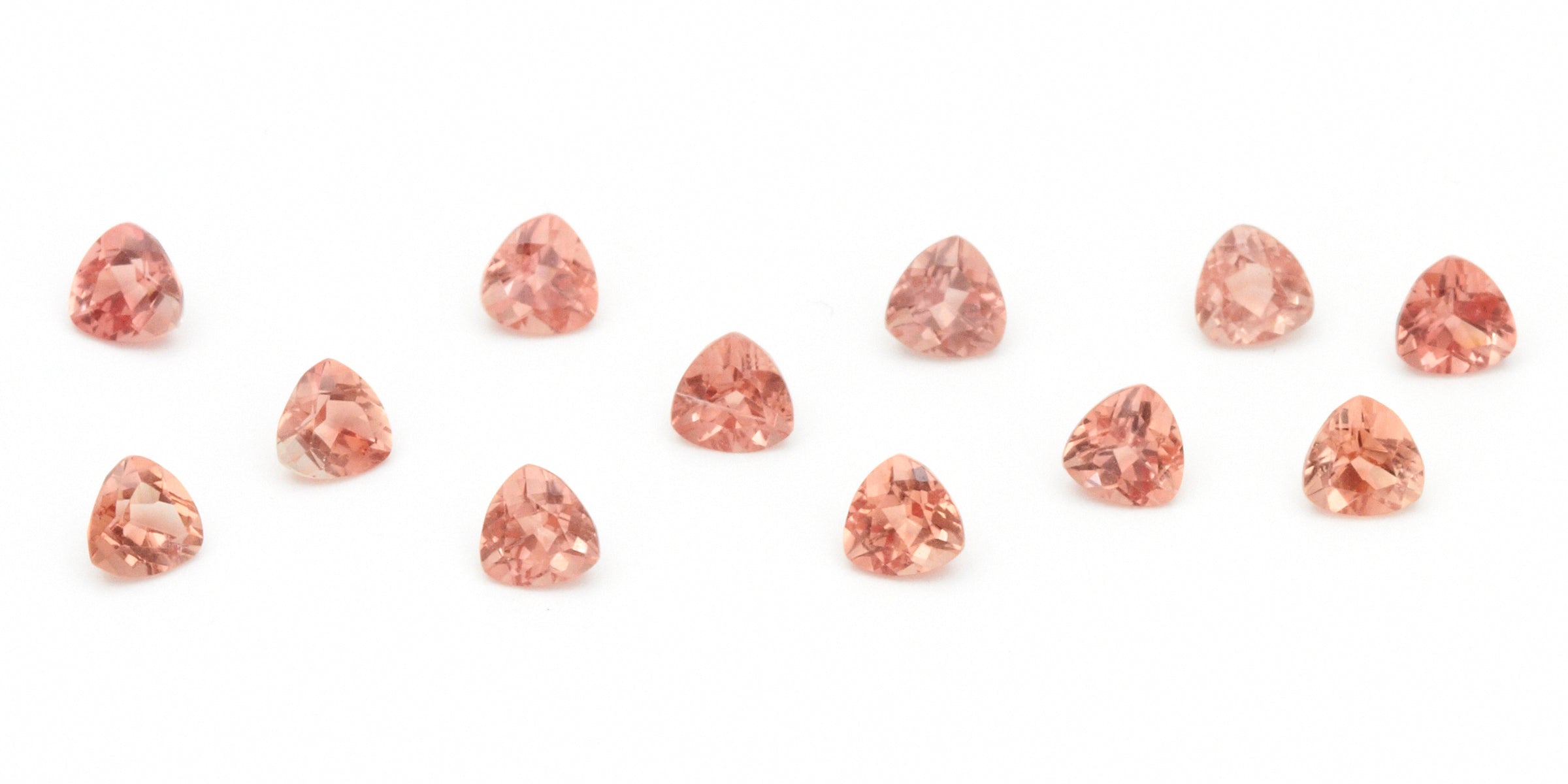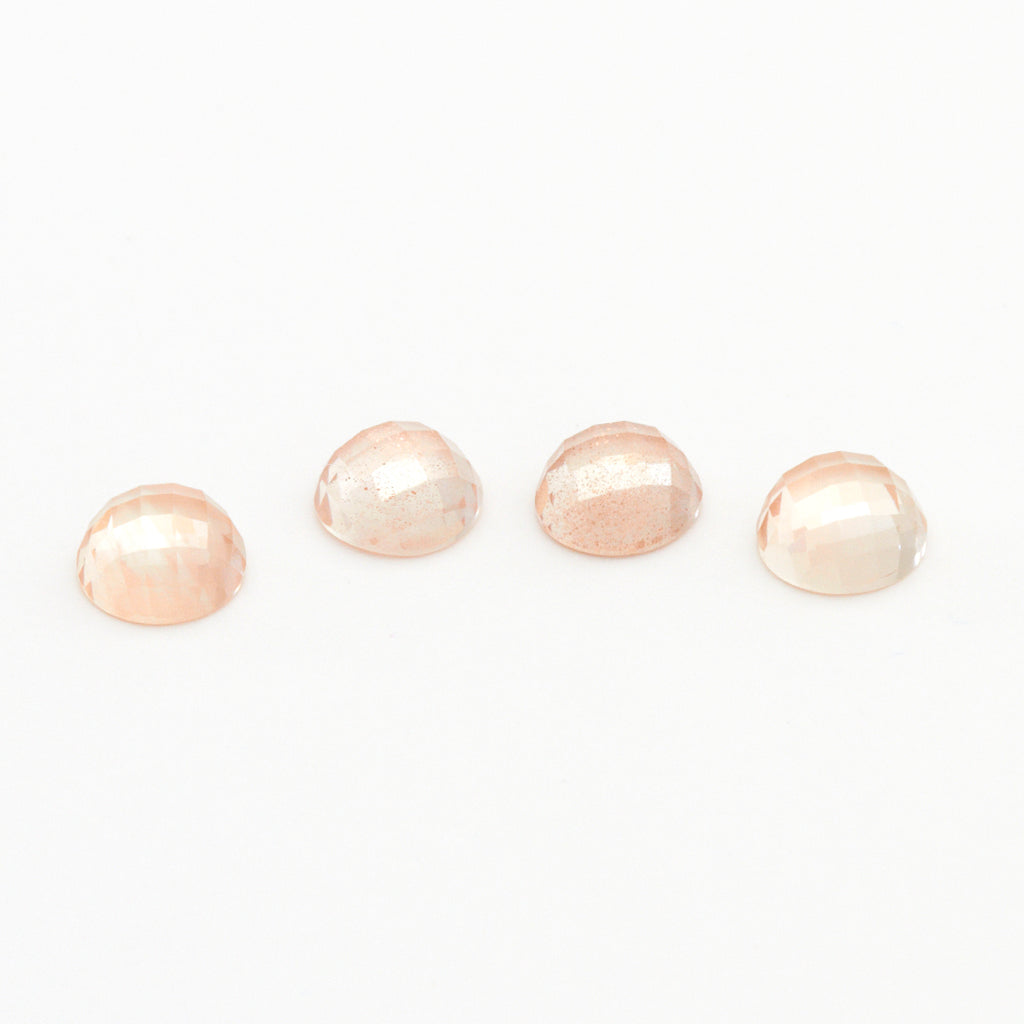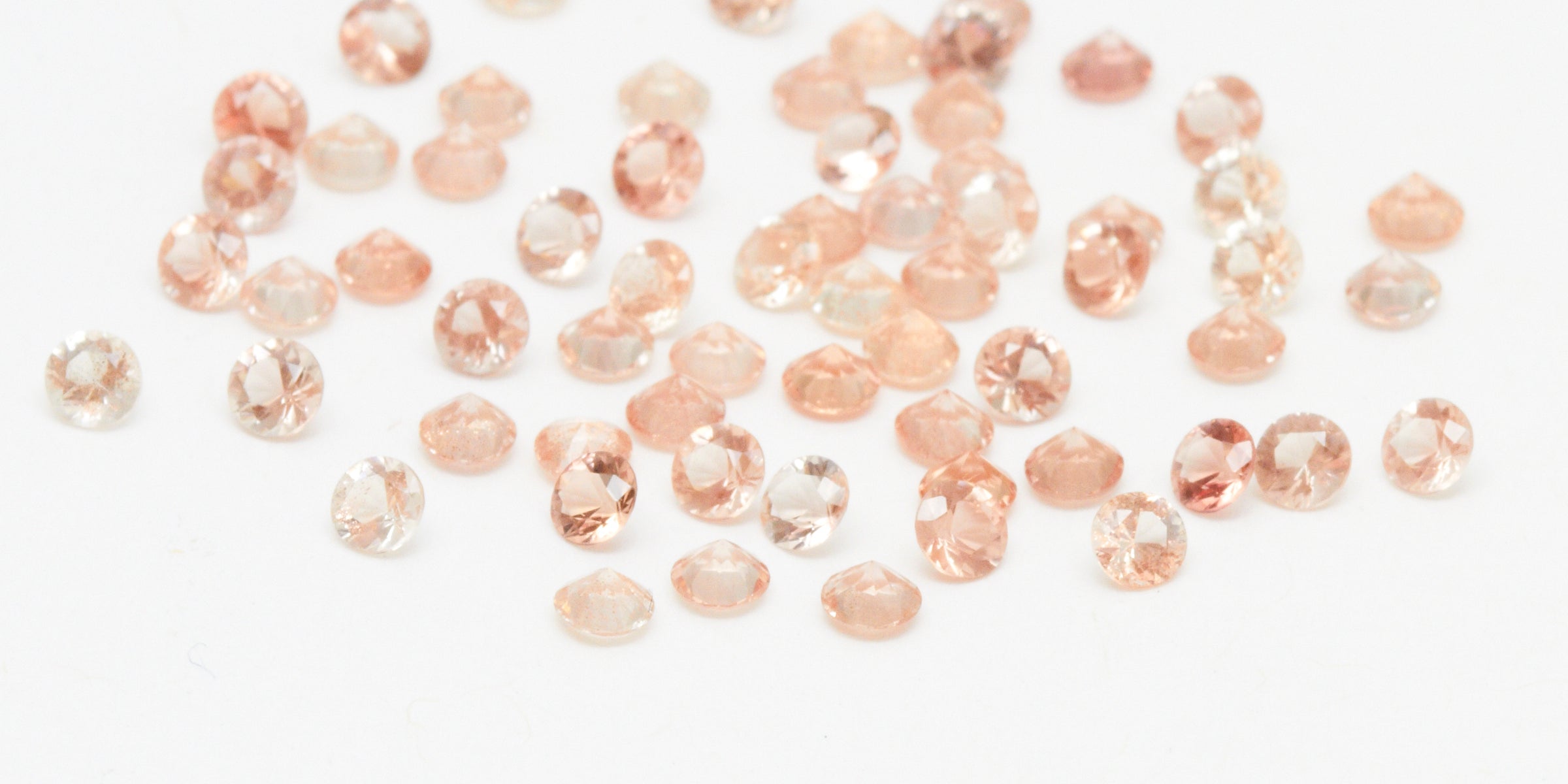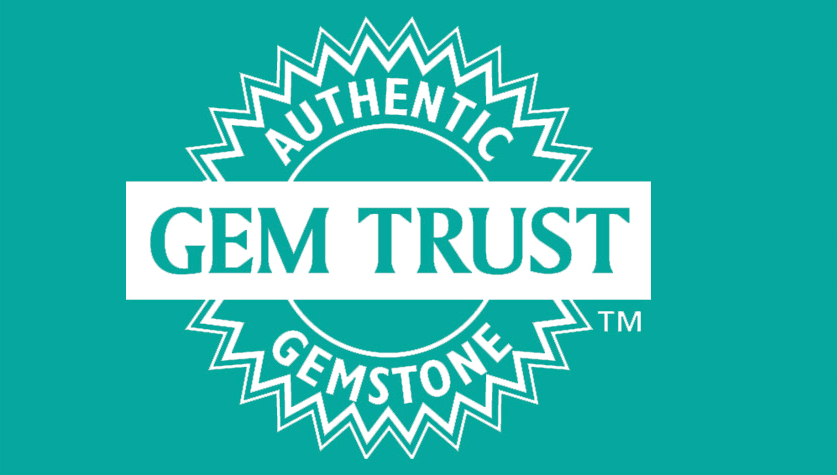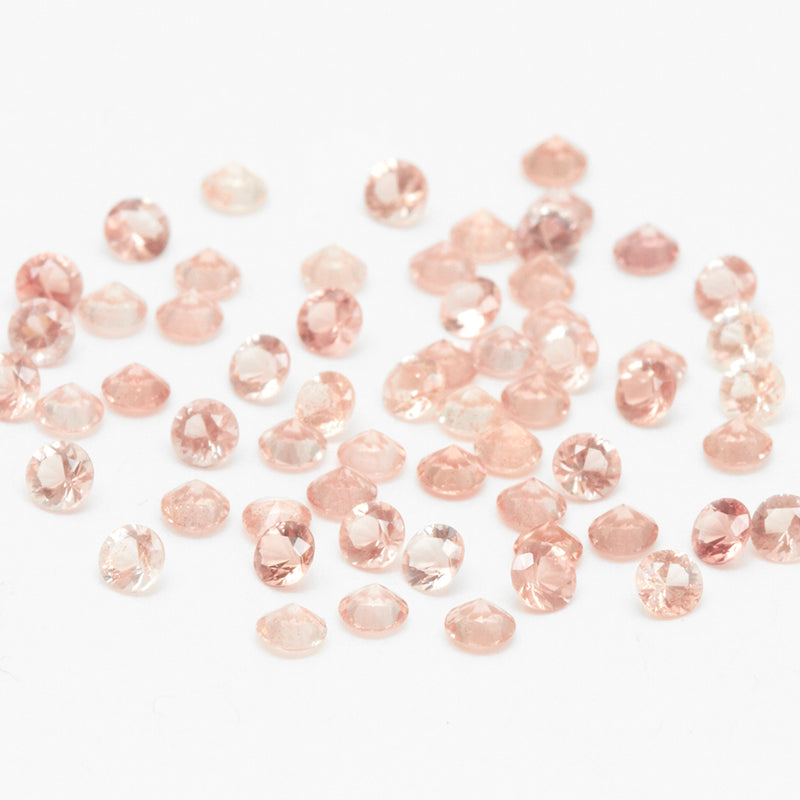Can you tell us a little about the source of this material?
With the name Oregon Sunstone, it is pretty obvious this gem comes from Oregon, USA. There are different locations in Oregon that produce Sunstone, though the majority of our production comes from the plush area of Southern Central Oregon. It is mined in shallow, open pits in the high desert of Lake County where you’ll find an abundance of jack rabbits, sage brush, and juniper bushes.
The other area in Oregon where we get some of our Sunstone rough is about 100 miles northeast – in Harney County. This is also a high desert location with miles and miles of pine trees. This material tends to have richer reds and oranges than some of the other deposits.
Oregon Sunstones can be found in pale yellows, peach, pink, rust-red to deep reds, as well as various shades of green. Some of the peach and red stones will display tiny copper platelets, known as ‘schiller’, which sparkle and reflect light as it enters the stone. This is probably one of the most sought-after varieties we cut and happens to be what we cut most of.
What kinds of sizes, shapes and cutting styles can be found?
Sunstone rough is a very versatile material for gemstone cutting. It is common to find 50 to 100ct pieces of rough, but it tends to be fractured, which means it must be cut down to result in a clean finished gemstone. It lends itself to nearly any shape, so that is exactly what we do with it; lots of fun and unique shapes! These include traditional shapes like rounds, ovals, pear shapes and emerald cuts, but we also cut kites, tablets, hexagons, baguettes, cabochons, our signature GeoCuts™ and an array of shapes in rose cuts. We can cut nearly any size, but one thing to remember is that the smaller the stone is cut, the lighter the color and schiller effect will appear to the eye. For example, a 2mm stone will not show the color or schiller as well as a 5 or 10 carat stone.
That being said, we cut as small as 2mm and as large as 30 carats! While it’s unusual to find large, faceted Sunstones, we do have a noteworthy collection of larger 10 to 30 carat one-of-a-kind stones. We have a variety of sizes with and without schiller.
Is this material typically enhanced in any way?
Not at all! Our Oregon Sunstone is never treated in any way. While it’s uncommon to come across treated Oregon Sunstone, it is possible. We just find that this material is stunning on its own, so why change anything about it?
Are there any unique characteristics you can share about this material?
Undeniably, the most unique aspect about the Oregon Sunstones we offer are the pieces that display the schiller effect, otherwise known as ‘aventurescence.’ This optical phenomenon occurs when tiny copper platelets reflect light as it enters the gem.
While Sunstone is found many places around the world including India, East Africa, and Australia, each location displays a slightly different look when it comes to schiller. The Oregon material stands out as the only sunstone with copper platelets, which not only creates a deep-peachy body color in the gems but also manifests as schiller, shimmering like peach-colored glitter. In contrast, sunstones from other locations may appear less saturated in color or in larger confetti-like shapes in varying colors. In instances like the African and Indian varieties, the schiller is caused by hematite platelets rather than copper. Since the body of the stone displays no color, the intensity of the schiller directly influences its perceived saturation. Hence, Oregon Sunstone is a distinctly unique American gem with a wide array of natural hues, both with and without schiller - all thanks to the presence of copper!

